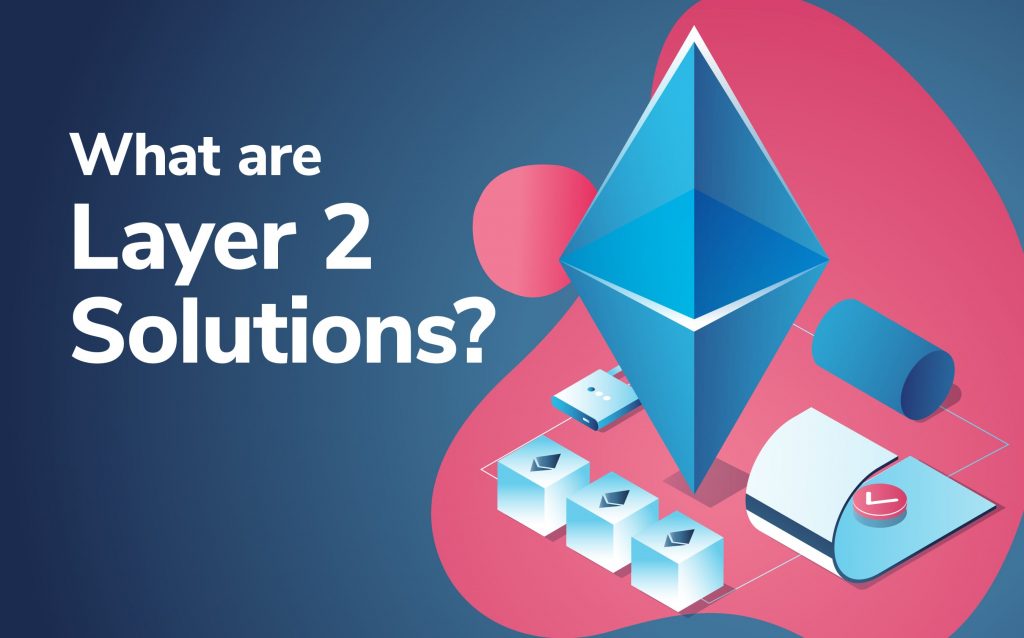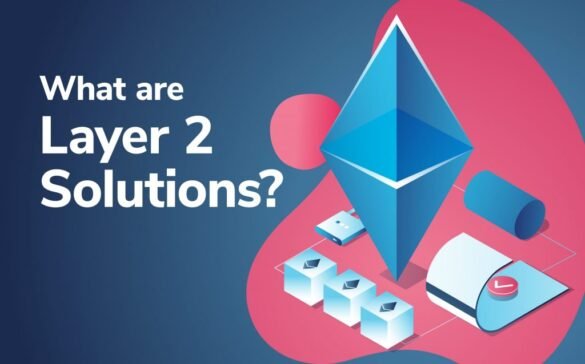Exploring Layer 2 Solutions for Ethereum: Scaling for the Future
As developers and investors closely examine the evolving landscape of Ethereum, Layer 2 solutions are increasingly gaining attention as a critical component for the network’s scalability. These innovative technologies aim to enhance transaction speeds and reduce fees without sacrificing decentralization.
Imagine a bustling city where traffic congestion is a norm; Layer 2 solutions are akin to building additional roadways to facilitate smoother travel. Here are a few key benefits that professionals are excited about:
- Increased Throughput: Thousands of transactions per second can be processed.
- Lower Fees: Significantly reduced gas costs attract more users.
- Enhanced User Experience: Faster transaction confirmation times lead to increased adoption.
With the ongoing developments in Layer 2 technology, Ethereum is setting its sights on a promising future, addressing the scalability challenges it has faced.

Exploring Layer 2 Solutions for Ethereum: Scaling for the Future
Building on the understanding of Ethereum’s challenges, we see Layer 2 solutions as the key to unlocking the network’s next phase of growth. These solutions adapt the existing Ethereum framework to allow for greater transaction volumes while maintaining the integrity of the blockchain.
Think of Layer 2 as an extension to your home—providing more space without altering the foundation. Here’s what makes these solutions crucial:
- Scalability: They facilitate a higher number of transactions, crucial for widespread adoption.
- Cost Efficiency: Users benefit from lower fees, making Ethereum more accessible.
- Speed: Reduced wait times enhance user satisfaction and engagement.
As we delve deeper into specific Layer 2 technologies, the promise of a more efficient Ethereum ecosystem becomes clearer.

Introduction
What is Layer 2 Scaling?
In the quest for Ethereum’s scalability, Layer 2 scaling has emerged as a beacon of hope. Layer 2 refers to protocols built on top of the Ethereum blockchain that enhance its capacity to handle transactions. Think of it as a secondary layer that processes transactions off the main chain while still benefitting from the security of Ethereum itself.
Imagine being at a packed concert where the main entrance is overflowing. Layer 2 solutions act like additional entrances, allowing more attendees to enter without causing chaos. Key features of Layer 2 scaling include:
- Enhanced Transaction Speed: Faster processing times for users.
- Lower Transaction Costs: Reduced fees make it more economical to use the network.
- Retained Security: Leveraging Ethereum’s robust security features ensures trust.
As we explore these options, it’s essential to recognize how they can transform the Ethereum landscape for both developers and everyday users alike.

Overview of Ethereum Scaling Challenges
Scalability Limitations of Ethereum
Even with its groundbreaking technology, Ethereum faces significant scalability limitations. The underlying architecture was not designed to handle the explosive growth witnessed today. As the network experiences increased user engagement, transaction speeds can plummet, creating backlogs.
To put it simply, when more users hop on board, Ethereum struggles to keep pace, often resulting in slower operations.
Impact of High Gas Fees
One of the most visible consequences of these scalability issues is the surge in gas fees. High gas prices can deter everyday users from participating, forcing many to leave the network. Just last year, during peak periods, a simple transaction could cost a user upwards of $50!
This impact can be summarized as follows:
- Decreased Accessibility: High costs prevent smaller investors from engaging.
- Limited Use Cases: Projects that rely on microtransactions become unfeasible.
- User Frustration: A slow and costly experience can push users away.
Without addressing these challenges, Ethereum’s potential remains capped, making Layer 2 solutions more critical than ever.

Understanding Layer 2 Solutions
Definition and Benefits of Layer 2 Solutions
As the Ethereum community grapples with scalability challenges, Layer 2 solutions come to the forefront as ingenious responses. Simply put, Layer 2 refers to a variety of protocols that operate atop the main Ethereum blockchain to enhance capacity and efficiency.
The benefits are compelling:
- Increased Speed: Transactions can be processed much faster, improving user experience.
- Cost Reduction: Lower gas fees make Ethereum accessible to a broader audience.
- Scalability: These solutions allow Ethereum to handle much more traffic without compromising security.
This combination makes Layer 2 an exciting area for developers and users alike.
Types of Layer 2 Solutions
Diving deeper, there are several types of Layer 2 solutions currently gaining traction. Each comes with unique approaches to scalability:
- Optimistic Rollups: They assume everything is valid unless proven otherwise, enabling high throughput.
- ZK Rollups: Utilizing Zero-Knowledge proofs, they provide enhanced privacy while reducing data on-chain.
- Sidechains: Independent blockchains parallel to Ethereum, allowing for flexibility and innovation.
Understanding these options helps illuminate how Ethereum can evolve and meet the demands of a growing user base. With this foundation set, the exploration of popular Layer 2 solutions will reveal how they directly tie into these benefits.

Popular Layer 2 Solutions for Ethereum
Optimistic Rollups
One of the most prominent Layer 2 solutions is Optimistic Rollups. These innovative technologies assume that transactions are valid by default, only requiring proof in rare cases of disputes. This simplified approach significantly increases transaction speeds.
Key advantages include:
- High Throughput: Capable of processing thousands of transactions per second.
- Ease of Integration: They can be implemented with existing Ethereum applications relatively easily.
ZK Rollups
Another exciting option is ZK Rollups, leveraging Zero-Knowledge proofs to maintain privacy and security. Unlike Optimistic Rollups, ZK Rollups instantly verify transactions without needing dispute resolution, leading to extraordinary efficiency.
Their benefits include:
- Privacy Protection: Personal data is kept secure while validating transactions.
- Lower Data Costs: Reduced on-chain data requirements make them cost-effective.
Sidechains
Finally, Sidechains operate as independent blockchains that run parallel to Ethereum. These chains can interact with the main Ethereum network while optimizing their own environments for speed and efficiency.
Benefits of Sidechains are:
- Flexibility: Developers can customize their environment for specific use cases.
- Reduced Congestion: Offloads traffic from the main Ethereum network, enhancing overall performance.
As these solutions evolve, they are paving the way for a more scalable and user-friendly Ethereum ecosystem. Understanding their intricacies will set the stage for further exploring implementation and adoption considerations.

Implementation and Adoption Considerations
Factors Influencing Adoption
As Layer 2 solutions gain momentum, several factors influence their adoption within the Ethereum ecosystem. For instance, the user experience plays a critical role. If users find these solutions intuitive and convenient, they are more likely to embrace them.
Key factors include:
- Developer Support: A robust community producing tools and resources encourages adoption.
- Integration with Existing Applications: Solutions that seamlessly plug into popular dApps are more likely to succeed.
- Education and Awareness: Increased understanding of benefits promotes user interest and involvement.
Challenges in Implementing Layer 2 Solutions
However, implementing Layer 2 solutions isn’t without its challenges. Developers often face hurdles that can slow down progress.
Some notable challenges are:
- Security Concerns: Ensuring that new protocols maintain the robust security of Ethereum is paramount.
- Complexity of Transition: Existing applications may need significant adjustments to integrate with Layer 2 solutions.
- Fragmentation of Resources: The rise of multiple Layer 2 solutions can lead to a divided ecosystem, making it harder for users to choose the best option.
Navigating these considerations is essential as the Ethereum community endeavors to leverage Layer 2 solutions effectively. As we look ahead, a comparison of different Layer 2 solutions will further highlight their strengths and weaknesses in overcoming these adoption challenges.

Comparison of Layer 2 Solutions
Performance Metrics Comparison
As Layer 2 solutions like Optimistic Rollups, ZK Rollups, and Sidechains continue to evolve, comparing their performance metrics is essential. Each solution showcases unique strengths that cater to different use cases.
Key performance metrics include:
- Transaction Speed:
- Optimistic Rollups can process thousands of transactions per second.
- ZK Rollups offer near-instant verification times due to their mathematical proofs.
- Gas Fees:
- Sidechains can often provide the lowest fees as they’re not as congested as the main Ethereum chain.
These metrics are critical for developers looking to optimize their dApps.
Security and Decentralization Comparison
When evaluating Layer 2 solutions, security and decentralization are paramount. These factors not only protect users but also ensure the integrity of the network.
- Optimistic Rollups leverage Ethereum’s security while using a fraud-proof mechanism, but they can be slightly slower in dispute resolution.
- ZK Rollups, on the other hand, provide strong security through cryptographic proofs, which makes them more robust against fraud.
- Sidechains offer flexibility but can sacrifice some degree of decentralization since they often rely on separate validators, which may lead to centralized control.
Understanding these comparisons helps developers and users alike make informed decisions as they navigate the diverse world of Layer 2 solutions. With this knowledge, we can now explore the future outlook and developments for these technologies in the Ethereum ecosystem.

Future Outlook and Developments
Evolution of Layer 2 Technology
As we look ahead, the evolution of Layer 2 technology shows no signs of slowing down. Researchers and developers are tirelessly working on innovative solutions to enhance performance and usability.
Key trends to watch include:
- Interoperability: Layer 2 solutions are increasingly focusing on seamless interactions between different protocols, thereby fostering a more integrated ecosystem.
- User-Friendly Interfaces: Efforts are being made to streamline user experiences, making it simpler for newcomers to navigate and utilize these solutions.
Impact on Ethereum Ecosystem
The advancements in Layer 2 solutions are dramatically reshaping the Ethereum ecosystem. A more scalable, efficient Ethereum means more dApps, increased user engagement, and broader adoption.
Consider these potential impacts:
- Wider Adoption: As transaction fees decrease, more users can participate, democratizing access to the platform.
- Diverse Use Cases: Lower costs and increased speeds allow for innovative use cases, including microtransactions and gaming applications.
The ongoing development and adoption of Layer 2 solutions serve as a catalyst for Ethereum’s future growth, ensuring its position as a leading blockchain platform. With a solid foundation established, it’s essential to summarize the benefits of these innovations and their importance for Ethereum’s sustainability.

